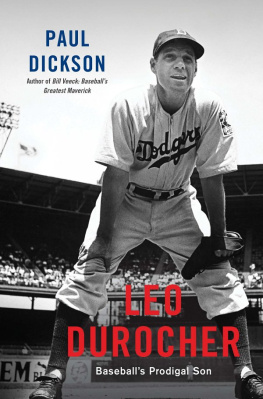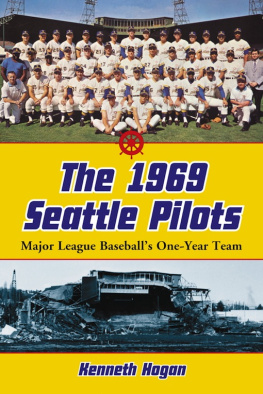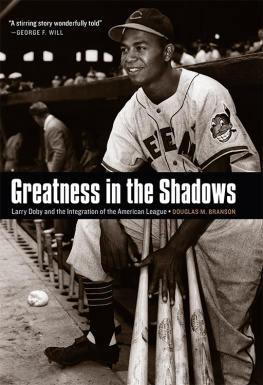
Sputnik: The Shock of the Century (2001)
The Hidden Language of Baseball (2003)
The Bonus Army: An American Epic (with Thomas B. Allen) (2005)
Slang: The Topical Dictionary of Americanisms (2006)
Labels for Locals: What to Call People from Abilene to Zimbabwe (2007)
Family Words: A Dictionary of the Secret Language of Families (2007)
Baseballs Greatest Quotations (2007)
The Dickson Baseball Dictionary (Third Edition) (2009)
The Unwritten Rules of Baseball (2009)
A Dictionary of the Space Age (2009)
Drunk: The Definitive Drinkers Dictionary (2009)
Toasts: Over 1,500 of the Best Toasts, Sentiments, Blessings, and Graces (2009)
On This Spot: Pinpointing the Past in Washington, D.C.
(with Douglas E. Evelyn) (2010)
War Slang: American Fighting Words and Phrases Since the Civil War (2011)
Baseball Is Defining the National Pastime (2011)
Courage in the Moment: The Civil Rights Struggle, 19611965
(with Jim Wallace) (2011)
Journalese: A Dictionary for Deciphering the News (with Robert Skole) (2012)
Because the United States had just entered World War I, the Series was played a month early, with the last month of the regular season lopped off and the teams in first place at the end of August being awarded the pennant. On December 26, 1919, the Red Sox sold their star pitcher Babe Ruth to the New York Yankees, who recognized that his bat was even better than his arm and put him in right field.
Bill Veeck Jr. wrote about this discovery in his 1965 book, The Hustlers Handbook. Harry Grabiner would later work for Bill Veeck when he was principal owner of the Cleveland Indians.
The box scores support this. The Cubs were picked off three times, including twice in the decisive game 6. That game was lost 21 on a two-run error by Cubs right fielder Max Flack. Game 4 had been tied 22 in the eighth inning, when Cubs pitcher Phil Douglas gave up a single, followed by a passed ball, followed by his errant throw on a bunt attempt that allowed the winning run to score.
Ruth batted sixth and remains the only starting pitcher in World Series history to bat other than ninth in the batting order.
Douglas was banned from baseball in 1922 after he offered in writing to a friend on the Cardinals to skip out on the New York Giants (and presumably cost them the pennant) if someone would pay him to head home on the next train.
Loeb was also the father of Richard Loeb, who in 1924 co-conspired with Nathan Leopold to commit the perfect crime in the murder of Bobby Frank. The Leopold-Loeb trial, dubbed the trial of the century, resulted in both men getting life imprisonment.
The fact that Veeck called on journalists to pursue this rather than owners and club officials is telling, according to Black Sox expert Jacob Pomrenke: He trusted the writers above all other elements in baseball.
Hendrix denied any knowledge of a fix, but he never played in organized baseball again after the 1920 season. The Cubs released him in February 1921, with the explanation that they were rebuilding their pitching staff, and no other club signed him.
The eight: pitcher Ed Cicotte, first baseman Arnold Chick Gandil, pitcher Lefty Williams, center fielder Happy Felsch, shortstop Swede Risberg, third baseman Buck Weaver, utilityman Fred McMullin, and one of most popular stars of his time, left fielder Shoeless Joe Jackson.
Helene Britton had earlier inherited the St. Louis Cardinals, which she owned from 1911 to 1918.
Years later, in 1954, when Donahue was still with the Cubs as a full vice president, Bill Veeck Jr.by then an owner himselfcalled her as astute a baseball operator as ever came down the pike. He added, She has forgotten more baseball in her forty years with the Cubs than most of the so-called magnates will ever know.
According to the manual given to ushers at Wrigley Field today, Weeghman had earlier introduced a discount on Friday games for women on general admission tickets. Ladies Day was not an entirely new idea, but the National League had, inexplicably, placed a ban on this promotion in 1909.
Al Capone would arrive with several bodyguards and occasionally a young teen named Sam Pontarelli, one in the extended surrogate family Capone cultivated. On September 9, 1931, Chicagos crime boss got the Cubs Gabby Hartnett to autograph a baseball before the Cubs defeated the White Sox 30. The moment was immortalized by an Associated Press photographer. When the photo appeared in newspapers across the country, an edict came down from Commissioner Landiss office forbidding fraternization between players and fans. Hartnetts reply to Landiss admonishments became legendary: If you dont want anybody to talk to the Big Guy, Judge, you tell him. At the time, the boy shown in the photo with Capone was identified as Capones son, Albert Francis (Sonny), but Capone never appeared in public with his immediate family. Even today the boy is incorrectly identified, even on the Associated Press Web site.
According to Scott Jones, it was rumored that Veeck senior also distributed season passes to all the policemen who patrolled the roads from Hinsdale to the ballpark on the north side of Chicago, which presumably allowed him a little extra latitude in driving to and from Wrigley Field.
These were given by the College Board Examination Board of New York City and were precursors to the modern Strategic Aptitude Tests (SATs).
Normally reserved for a crisisbut often extended to baseballthese were special editions hastily printed and hawked by street vendors. During a World Series, there would be at least one newsboy on every corner.
An Associated Press report ten days after the Hornsby firing said that Landis was about to open an investigation into the allegation that several Cubs players had joined Hornsby in his racetrack betting (New York Times, August 12, 1932).
Attendance was 10,132,262 in 1930, dropping to 8,467,107 in 1931 and 6,974,566 in 1932. The next year, 1933, the numbers hit rock bottom at 6,089,031, the worst since the war-shortened season of 1918, when only 3,080,126 went through the turnstiles.
The Pythians disbanded after their leader, Octavius Catto, a baseball and cricket player, was murdered in 1871.
In 1916 Walter McCredie, manager of Portland in the Pacific Coast League, signed Lang Akena, a player of Chinese-Hawaiian origin, who was quickly released because of strenuous objections from prospective team mates. Chicago Defender, January 16, 1916.
As the Depression wore on, two of her sisters got into financial trouble and asked for her help. She agreed under the proviso that they write each month asking for the money and acknowledging their indebtedness to her late husband, the man who had outraged her family with his lack of education and poor professional prospects.
David Spenard, Sapersteins nephew, said that he always understood that the first time the team appeared in Harlem was in 1968.
Dorr had lived with his family in a bungalow built beneath the left-field grandstanda unique and whimsical idea that had come to William Wrigley in 1923. According to the Cubs director of event operations and security, who was interviewed for this book by Brad Beechen, the new groundskeepers apartment was located in a separate building across Waveland Avenue, which is used now for storage and for staff training sessions.
They also later added some Baltic ivy, with shiny, leathery leaves that stay green all winter, and Virginia creeper, whose five-leaflet clusters turn reddish brown in the fall. There are two stories as to the inspiration of the ivy-covered walls, according to Cubs historian Bill Hartig. One is that Bill Veeck was impressed with the ivy-covered walls of Bush Stadium, a minor-league park, in Indianapolis. Another had the White Sox ivy-covered outfield walls in their spring-training venue in Pasadena as the inspiration. Todays ivy is a Boston ivybittersweet blend but still contains elements of the original Veeck-Dorr plantings.
Next page











